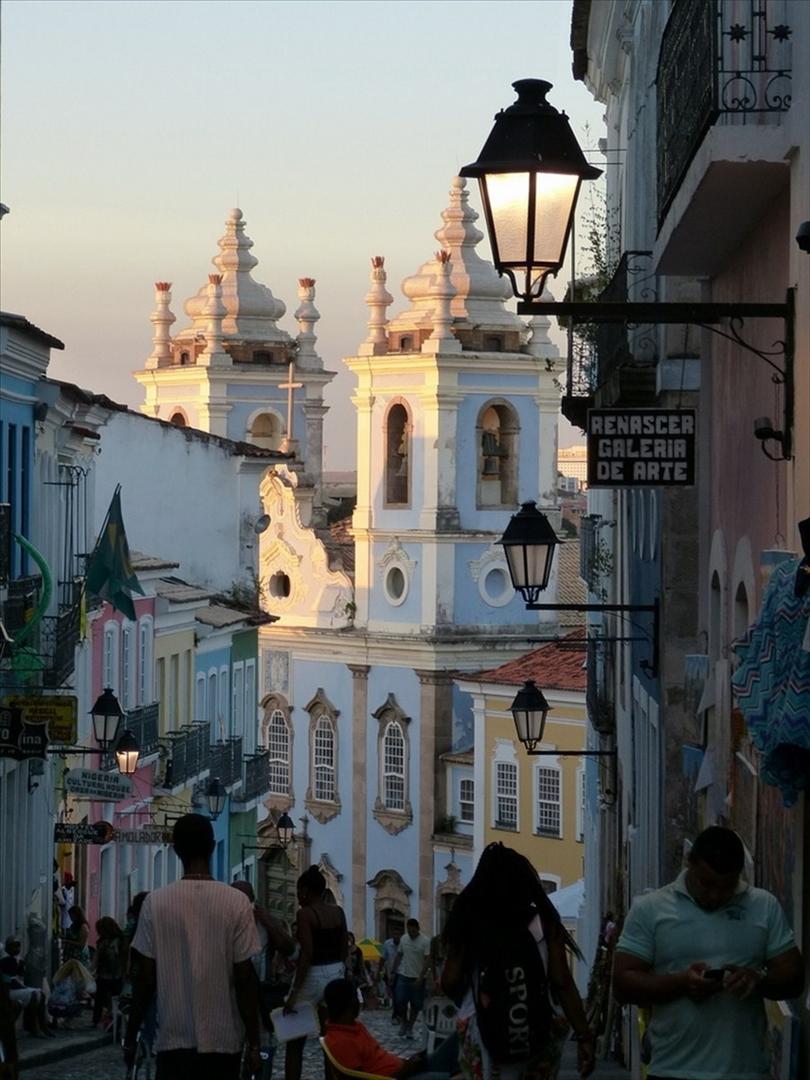Salvador and the Colonial Heritage of Bahia

Sights in and around Salvador da Bahia
The mixture of different cultures, customs, traditions, and religious views attracts thousands of Brazilian and foreign tourists every year to the city of Salvador to spend their Brazilian vacations there. The colonial heritage of Salvador can be found in almost every alley of the upper city, which consists of buildings from the 17th century. The discovery of the sights of the city of Salvador, the numerous natural attractions of the northeast coast of Brazil, or relaxation at the Praia do Forte complete a Brazil trip.
The former first capital of Brazil combines both the colonial past and modern Brazil in perfect harmony. The upper and lower city in Salvador da Bahia is separated by an elevator, the so-called Elevador Lacerda. The upper city, which is also considered a World Heritage Site, consists of countless small streets and alleys that are home to houses of the 17th and 18th century, museums, and churches. The church of Sao Francisco is considered one of the most beautiful baroque buildings in the country and attracts many tourists. Almost at every street corner, there is something interesting to discover.
During a city walking tour in Salvador, it is possible to discover both the historic upper city, which is formed around the Pelourinho, and the lower city with the Mercado Modelo. At the Pelourinho, in the heart of the old town, you can also immerse yourself in the world of colonialism and stay overnight in one of the many pousadas, such as the Pousada Colonial.
The third-largest city in Brazil is the capital of the northeastern state of Bahia. During the carnival events, the city bursts at the seams, with almost 4 million visitors attending the festivities each year. But the coastal city of Salvador is not only worth a visit during the carnival, because the local culture can best be explored without the huge carnival bustle. Culturally, the city of Salvador is firmly connected to Capoeira and its roots. The fight dance Capoeira came to Brazil with African slaves and was used in the beginning mainly as a means to fight aggression. Over many generations, Capoeira developed into today's worldwide recognized sport.
The surrounding areas such as the cities of Amaro or Cachoeira are popular destinations to escape the big city and to immerse oneself in the colonial heritage of Bahia. In Amaro there is a colorful weekly market and during a city walk, you can discover many historical buildings from the colonial period. Those seeking relaxation will find it at Praia do Forte. In this nice beach village, there are high-quality restaurants, good tourist infrastructure, and elegant hotels. This combination makes it one of the most visited beaches and vacation resorts on the coast of Bahia. The fine sandy beach captivates with crystal blue sea and coral reefs. A stay in Salvador can be wonderfully combined with a rental car trip in Brazil. Start your Brazil round trip with a rental car and drive independently from Recife to Salvador da Bahia.
On this trip, you will see for example the beautiful region of Imbassai, with the Praia do Imbassai, which is one of the main attractions. Brazil vacationers who like to combine sports activities with sightseeing should not miss a canoe trip on the river system in Imbassai. There is the possibility to row through bird sanctuaries and therefore the chances are good to see some rare bird species.
Sources: feriasbrasil.com.br; viajeaqui.abril.com.br; guia-salvador.com; viajenaviagem.com

